 W
WThe Aganane Formation is a Pliensbachian geologic formation in Morocco. Fossil stegosaur and theropod tracks have been reported from the formation.
 W
WThe Bagå Formation is a geological formation dating to around 199 to 170 million years ago, in the Early and Late Jurassic. It is located on the island of Bornholm, Denmark.
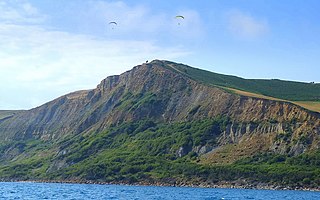 W
WThe Beacon Limestone Formation, historically known as the Junction Bed, is a formation of early Jurassic age (Pliensbachian–Toarcian). It lies above the Dyrham Formation and below the Bridport Sand Formation. It forms part of the Lias Group. It is found within the Wessex Basin and parts of Somerset, in England. It is well known for the Strawberry Bank Lagerstätte, which contains the 3-dimensionally preserved remains of vertebrates, including marine crocodyliformes, ichthyosaurs and fish, as well as insect compression fossils.
 W
WThe Beipiao Formation contains coal measures dated to the Early Jurassic period. Its mainly located in Xinglong County, Hebei Province
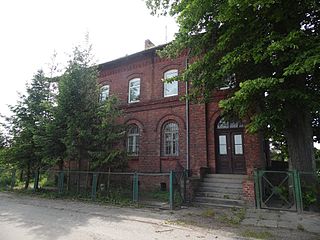 W
WThe Blanowice Formation is a geologic formation in Częstochowa, Poland. It is late Pliensbachian-Lowermost Toarcian age. Vertebrate fossils have been uncovered from this formation, including tracks. Along with the Drzewica Formation is part of the Depositional sequence IV-VII of the late lower Jurassic Polish Basin, with the IV showing the presence of local Alluvial deposits, with possible meandriform deposition origin, dominated in Jagodne and Szydłowiec, while delta system occurred through the zone of the modern Budki. Deposits of sequences IV, V, VI and VII make up the Blanowice Formation, being all four sequences are of Pliensbachian age, documented by megaspores (Horstisporites). On the upper strata, “sub-coal beds" cover the sequence VII-lower VIII, while the uppermost part of VIII is identified with the Ciechocinek Formation. The Blanowice Formation has been known for decades thanks to the abundant Plant fossils and plant roots, but mostly due to the Blanowice Brown Coals, where the oldest Biomolecules found worldwide have been recovered. The Mrzygłód mine dinocyst assemblage is taxonomically undiversified, containing specimens that are good age indicators al lowing relatively precise suggestion of its age. Luehndea spinosa, with a single recovered specimen spans between the Late Pliensbachian (Margaritaus) to the Lowermost Toarcian (Tenuicostatum). Other ocal dinocysts such as Mendicodinium range Late Pliensbachian–Aalenian, a wider stratigraphic range. The lower part of the formation is coeval in age with the Gielniów Formation and Drzewica Formation, Lobez Formation and Komorowo Formation (Pomerania), Olsztyn Formation, the lower part of the Rydeback Member of the Rya Formation, lower Fjerritslev or Gassum Formation, lower and middle Bagå Formation (Bornholm), Neringa Formation (Lithuania). The Upper part is coeval with the lowermost upper Rydeback Member, upper Gassum Formation and lower Lava Formation (Lithuania).
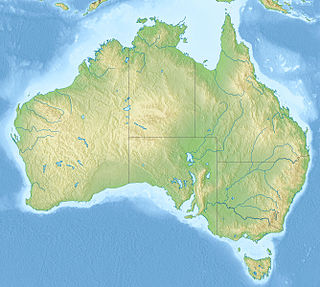 W
WThe Cattamarra Coal Measures is an Early Jurassic geological unit in Western Australia.
 W
WThe Charmouth Mudstone Formation is a geological formation in England. It preserves fossils dating back to the early part of the Jurassic period (Sinemurian–Pliensbachian). It forms part of the lower Lias Group. It is most prominently exposed at its type locality in cliff section between Lyme Regis and Charmouth but onshore it extends northwards to Market Weighton, Yorkshire, and in the subsurface of the East Midlands Shelf and Wessex Basin. The formation is notable for its fossils, including those of ammonites and marine reptiles and rare dinosaur remains. The formation played a prominent role in the history of early paleontology, with its Lyme Regis-Charmouth exposure being frequented by fossil collectors including Mary Anning.
 W
WThe Clarens Formation is a geological formation found in several localities in Lesotho and in the Free State, KwaZulu-Natal, and Eastern Cape provinces in South Africa. It is the uppermost of the three formations found in the Stormberg Group of the greater Karoo Supergroup rocks and represents the final phase of preserved sedimentation of the Karoo Basin.
 W
WThe Cleveland Ironstone Formation is a sequence of marine ironstone seams interbedded with shale and siltstone units which collectively form a part of the Lower Jurassic System of rocks underlying Cleveland in North Yorkshire. Exploitation of the ironstone seams became a major driving force behind the industrialisation of the Teesside district during the mid- to late-1800s.
 W
WThe Djupadal Formation is a geologic formation in Skåne County, southern Sweden. It is Early in age. It recovers at various locations throughout Central Skane, know by the discovery of basalt tuff layers, including Sandåkra, Korsaröd and Djupadal. An original analisis of the location of Korsaröd led to a Toarcian-Aalenian age. Aspect that was recovered on various papers on the 80-90s. But was dismissed on 2016, when a series of Palynogical samples recovered a Late Pliensbachian and probably Lower Toarcian age for the Korsaröd Outcrop. The formation was deposited in the Central Skane region, linked to the late early Jurassic Volcanism. The Korsaröd member includes a volcanic-derived Lagerstatten with exceptional fern finds.
 W
WThe Drzewica Formation is a geologic formation in Szydłowiec, Poland. It is Pliensbachian in age. Vertebrate fossils have been uncovered from this formation, including dinosaur tracks. The Drzewica Formation is part of the Depositional sequence IV-VII of the late lower Jurassic Polish Basin, with the IV showing the presence of local Alluvial deposits, with possible meandriform deposition origin, dominated in Jagodne and Szydłowiec, while delta system occurred through the zone of the modern Budki. The sequence V shows a reduction of the erosion in the Zychorzyn borehole of the Drzewica Formation, showing changes on the extension of the marine facies, where upper deposits change from Alluvial to Deltaic-Seashore depositional settings. VI-VII facies where recovered on the Brody-Lubienia borehole, with a lower part exposed on the village of Śmiłów that shows a small fall of the Sea level. The stathigraphic setting of the dinosaur tracks reported from the formation suggest a Seashore or Deltaic barrier. Body fossils reported include bivalves, palynology, fossil trunks, roots. Trunks of coniferous wood, especially Cheirolepidiaceae and Araucariaceae trees show the occurrence of vast coniferous forests around the tracksite. The association of forests and dinosaur megafauna on the Pliensbachian suggests also a colder and specially damp ecosystem. As many studies of the formation share, Drzewica shows in part to be a gigantic shore barrel, setting at the time where the Polish basin sea was at its lowest point. Other related units are Fjerritslev or Gassum Formation, lower Bagå Formation (Bornholm), upper Neringa Formation (Lithuania). Abandoned informal units in Poland: upper Sawêcin beds, Wieluñ series or Bronów series.
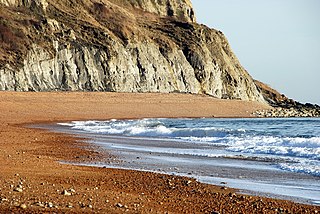 W
WThe Dyrham Formation is a geologic formation in England. It preserves fossils dating back to the early part of the Jurassic period (Pliensbachian).
 W
WThe Evergreen Formation is a Pliensbachian to Toarcian geologic formation of the Surat Basin in New South Wales and Queensland, eastern Australia. It is Upper Pliensbachian to Toarcian in age.
 W
WThe Fernie Formation is a stratigraphic unit of Jurassic age. It is present in the western part of the Western Canada Sedimentary Basin in western Alberta and northeastern British Columbia. It takes its name from the town of Fernie, British Columbia, and was first defined by W.W. Leach in 1914.
 W
WThe Hanson Formation is a geologic formation on Mount Kirkpatrick, Antarctica. It is one of only two major dinosaur-bearing rock groups found on the continent of Antarctica to date; the other is the Snow Hill Island Formation and related formations from the Late Cretaceous of the Antarctic Peninsula. The formation has yielded only a handful of Mesozoic specimens so far and most of it is as yet unexcavated. Part of the Victoria Group of the Transantarctic Mountains, it is below the Prebble Formation and above the Falla Formation. The Formation is related to the Volcanic Activity Linked to the Karoo-Ferar eruptions on the Lower Jurassic. The climate of the zone was similar to the modern Southern Chile, Humid, with a temperature interval of 17–18 degrees.
 W
WThe Kota Formation is a geological formation in India. The precise age of Kota Formation are uncertain, but it dates from the Early to Middle Jurassic, and is split into a Lower Member and Upper Member. The lower member is thought to be Hettangian-Pliensbachian. While the upper unit is thought to be Toarcian, but may possibly extend into the Aalenian. It conformably overlies the Dharmaram Formation which is Late Triassic to earliest Jurassic and is unconformably overlain by the Early Cretaceous Gangapur Formation. The lower member is approximately 100 m thick while the upper member is 490 m thick. Both subunits primarily consist of mudstone and sandstone, but near the base of the upper unit there is a 20-30 metre thick succession of limestone deposited in a freshwater setting.
 W
WThe Los Molles Formation is a geologic formation of Early to Middle Jurassic age, located at northern and central part of Neuquén Basin at Mendoza Shelf in Argentina. It is overlain by the Niyeu–Lajas Formation.
 W
WThe Lufeng Formation is a Lower Jurassic sedimentary rock formation found in Yunnan, China. It has two units: the lower Dull Purplish Beds/Shawan Member are of Hettangian age, and Dark Red Beds/Zhangjia'ao Member are of Sinemurian age. It is known for its fossils of early dinosaurs. The Dull Purplish Beds have yielded the possible therizinosaur Eshanosaurus, the possible theropod Lukousaurus, and the "prosauropods" "Gyposaurus" sinensis, Lufengosaurus, Jingshanosaurus, and Yunnanosaurus. Dinosaurs discovered in the Dark Red Beds include the theropod Sinosaurus triassicus, the "prosauropods" "Gyposaurus", Lufengosaurus, and Yunnanosaurus, indeterminate remains of sauropods, and the early armored dinosaurs Bienosaurus and Tatisaurus.
 W
WThe Mawson Formation is a geological formation in Antarctica, dating to roughly between 185-181 million years ago and covering the Pliensbachian-Toarcian stages of the Jurassic Period in the Mesozoic Era. Vertebrate remains are known from the formation.
 W
WThe Mecsek Coal Formation is a Jurassic geologic formation in Hungary. Indeterminate fossil ornithischian tracks have been reported from the formation.
 W
WThe Noreán Formation is a geological formation of the Eastern Ranges of the Colombian Andes, the Serranía de San Lucas and as basement underlying the southernmost Lower and northern Middle Magdalena Valleys. The formation consists of volcanic and pyroclastic lavas that range from andesites to rhyolites. Vitric, lithic and crystal tuffs and andesitic dikes and hypabyssal bodies are also present in the formation.
 W
WThe Nugget Sandstone is a Late Triassic to Early Jurassic geologic formation that outcrops in Colorado, Idaho and Utah, western United States. Fossil theropod tracks have been reported from the formation.
 W
WThe Redcar Mudstone Formation is a geological formation in North Yorkshire, England. Part of the Lias Group, it was deposited in the Hettangian to Pliensbachian stages of the Early Jurassic. The lithology consists of fissile mudstones and siltstones, with the lower part having thin beds of limestone and the upper part having thin beds of sandstone.
 W
WThe Rønne Formation is a geologic formation on the island on Bornholm, Denmark. It is of middle Hettangian to early Pliensbachian age. Vertebrate fossils have been uncovered from this formation. During the Early Jurassic, on what is now the Bornholm region was transitional between continental and marine settings with tidal influence. There was a lower delta plain, with lagoons and intertidal swamps. The formation is correlated with the lower Rya Formation and the upper Höganas Formation of Skåne, Sweden.
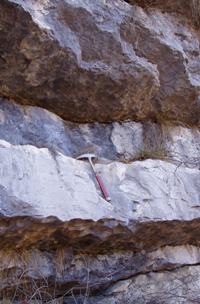 W
WThe Rotzo Formation is a geological formation in Italy, dating to roughly between 189 and 183 million years ago and covering the Pliensbachian stage of the Jurassic Period in the Mesozoic Era. Has been traditionally classified as a Sinemurian-Pliensbachian Formation, but a large and detailed dataset of isotopic 13C and 87Sr/86Sr data, estimated the Rotzo Formation to span only over the whole Pliensbachian.
 W
WThe Rya Formation is a geologic formation in Skåne County, southern Sweden. It is Early to early Middle Jurassic in age. The Rya Formation comprises siltstones, claystones, sandstones, mudstones and rare coal beds. The formation overlies the Höganäs Formation and is overlain by the Vilhelmsfält and Mariedal Formations.
 W
WThe Scunthorpe Mudstone is a geologic formation in England. It preserves plesiosaur fossils dating back to the Late Triassic (Rhaetian) to Early Jurassic (Hettangian) period. It predominantly consists of grey mudstone with thin beds of argillaceous limestone and calcareous siltstone. The Ichthyosaur Wahlisaurus is known from the formation. As is the holotype specimen of the dinosaur Sarcosaurus.
 W
WThe Staffelegg Formation is a formation of Early Jurassic age in the Canton of Aargau of northern Switzerland. The siltstones, marls, limestones and intermittent sandstones of the formation were deposited on the Northern Tethyan Carbonate Platform (NTCP). The Staffelegg Formation has provided fossils of the ichthyosaur Eurhinosaurus longirostris and the ammonite Catacoeloceras raquinianum.
 W
WThe Staithes Sandstone Formation is a geological formation in North Yorkshire, England. Part of the Lias Group, it is Pliensbachian in age. The lithology consists of silty sandstones, with varying argillaceousness. Typically intensely bioturbated and with many bedding structures.
 W
WThe Talkeetna Formation is a geologic formation in Alaska. It preserves fossils dating back to the Early Jurassic period.